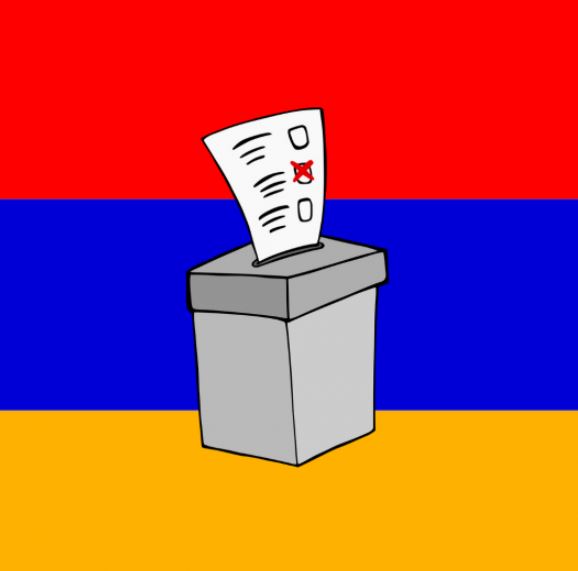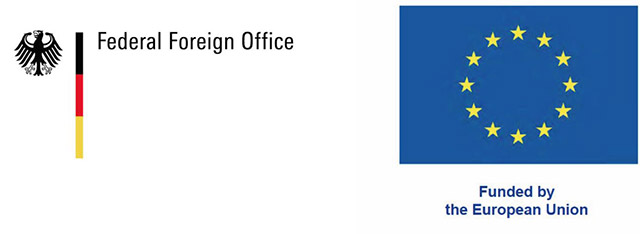The first two dates for Armenia’s autumn 2021 municipal elections have passed, October 17 and November 14, but one more Election Day is taking place on December 5. In a recent expert debriefing hosted by the EPDE, election experts outlined the context of these elections, initial findings concerning its conduct so far, and how recent renewed military activities by Azerbaijani forces may impact the elections. The full discussion summary can be found below or on the EPDE website here.
Election reform translated into practice
The municipal elections were delayed due to several factors: the COVID-19 state of emergency prevented elections from taking place while it was in effect (although the Constitution does not explicitly prohibit municipal elections during a state of emergency, a provision in the Electoral Code does), the renewed flare-up of the war with Azerbaijan in late 2020, the early parliamentary elections this June 2021, and the government’s desire to complete its municipal amalgamation process (which had also been delayed due to the same reasons). The majority of the newly-amalgamated communities will hold their municipal elections on 5 December.
These municipal elections are the first to be held after a package of reforms was passed in June 2020, which was followed by further provisions passed in spring 2021, which require communities with more than 4,000 registered voters to use a proportional party list system to elect their mayors and city councils. The recent municipal amalgamations brought more communities up to this 4,000-mark. Experts note several benefits to the new system including that it more accurately reflects the preference of the voter, helps political party institutionalization, and also increases the representation of women, as candidate lists must meet a 1-in-3 gender quota.
Read also
Concerning the gender quota, experts note that there has been some criticism of it being ‘artificial’. Despite the proportional system being expanded for municipal elections already in 2020, parties only started recruiting candidates for their lists in the last months and weeks, which led to cases where parties tried to fill their quotas last minute with whomever they could. Some candidates did not even know that they were candidates on a party list. There were also cases where pressure was exerted on women to withdraw their candidacy after lists were registered, in effect violating the gender quota requirement. There is a gap in the current law in that, if no more eligible women candidates remain on the list, the seats then go to the male candidates, defeating the purpose of the gender quota.
There was also a quota in newly-amalgamated communities for lists to include candidates from at least half of the communities that have become a part of the larger amalgamated community. In three cases, parties were unable to register their lists for failing to meet this quota. This requirement may help force parties to engage more people from these communities and strengthen their grassroots branches in the regions.
While all candidates must be on a party or alliance candidate list, they do not necessarily need to hold a party membership. Up to 30% of a party’s candidate list may be independents or even members of a different political party.
Conduct of the elections so far
The elections have been peaceful and competitive with one exception; in Armavir, only one party has presented a candidate list. During the campaign period, one can still see that the polarized Pashinyan and Kocharyan political camps are still alive, as was observed during the early parliamentary elections this year, but that now there is more space for new parties, which offers the voter more choice. Political alliances and coalitions are also being forged, which experts hope will lead to better democratic practices. However, it also became evident that certain parties were using the mechanism of alliances to simply rebrand their party in order to distance themselves from any previous political baggage that may reduce their voter support. There was one instance where an alliance did not actually have any candidates from one of the parties that made up the alliance, suggesting that they chose the format of an alliance simply to be able to use a different name to campaign under.
In most communities where incumbents ran for re-election, they won the most votes, with one exception in Meghri. Experts explain this by the fact that local elections still appear to be rather apolitical, where people vote for the usual, known faces rather than for a particular political program. It therefore has little to do with the ruling party per se, but rather with the individual candidates. Especially in smaller communities, observers noted that, in the past, incumbent mayors may have registered an opposing candidate out of their own loyal ranks so that an election can be justified, but who is no real competition to them. Voters then go to vote as a favour to the mayor or in the hopes of receiving a favour in the future. It is hoped that the amalgamations will break this trend of incumbents being re-elected over and over again, as they will have to gain broader support from other communities that are not their usual support base.
The voting procedures in these elections were somewhat complicated in the sense that different ballot types were used for different communities, depending on their size. Some large cities used the same system of separate ballot papers for different parties as is used in parliamentary elections, which does not require a pen to be used by the voter. Communities with 4,000 to 70,000 registered voters received ballots with the names of all the competing parties on one piece of paper, on which they mark their choice with a pen. The use of pens in elections generally increases the instance of spoiled ballot papers, which is the case in Armenia as well. When Armenia adopted the system of separate ballots for nationwide parliamentary elections, the number of spoiled ballots reduced from 53,800 (in 2012) to 6,700 (in 2017). The Central Electoral Commission also did not account for the different forms of ballots used; polling stations using the ballots with all party names on one piece of paper were not equipped with magnifying glasses to assist voters with visual impairments, even though these ballots include harder to read small writing in contrast to the separate ballot papers for each party.
Impact of border clashes on the elections
In the southeastern region of Syunik, and its regional capital Kapan, following the Election Day on 14 November, security concerns came to the forefront as Azerbaijani forces started blocking or closing key roads between communities. This is a mountainous area where several roads occasionally veer slightly across the Azerbaijani border and where the closing of roads could cut off communities from the rest of the country or major urban areas in the region. In a handful of villages, there were serious concerns about this and the impact on the elections was noticeable in the low support for the ruling party in these few villages. In general, however, this did not seem to pose a significant hindrance to the everyday lives of people in the area (passenger vehicles now have an alternate road) and therefore did not impact their participation in the elections.
Some general trends
There is a hope that things are evolving in the right direction in terms of democratic developments in the country, but these elections cannot be counted as a major achievement either. The following positive and negative trends are worth noting:
Positives
Emerging new political parties increase pluralism and diversity, as well as bring fresh air into local government;
Progress has been made in larger communities, where competition will not be between families or businesses, but rather political groups;
Misuse of administrative resources was spontaneous, no common patterns identified across communities.
Negatives
Political culture remains an issue: very little political dialogue takes places and politics is not issue-based;
Rebranding of parties to attract voters without offering new political ideas;
Shortcomings in tracking and enforcement of political finance regulation;
Low campaigning culture, where the day of silence is not fully respected;
Consequences of misuse of administrative resources are not widely understood by officials or politicians, who continue to provide gifts or host events around elections.






















































